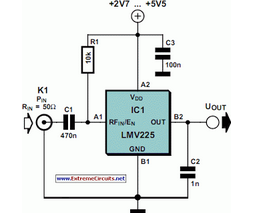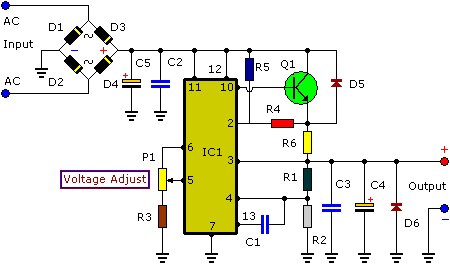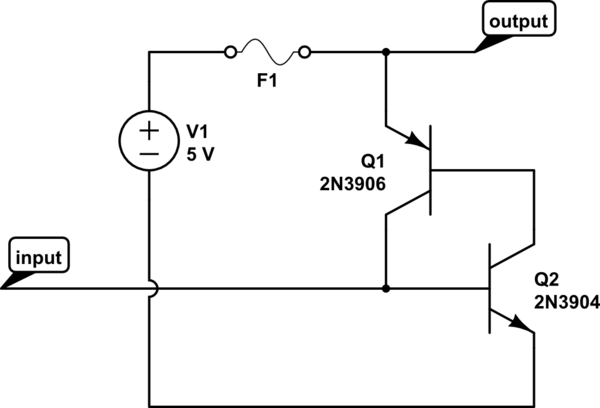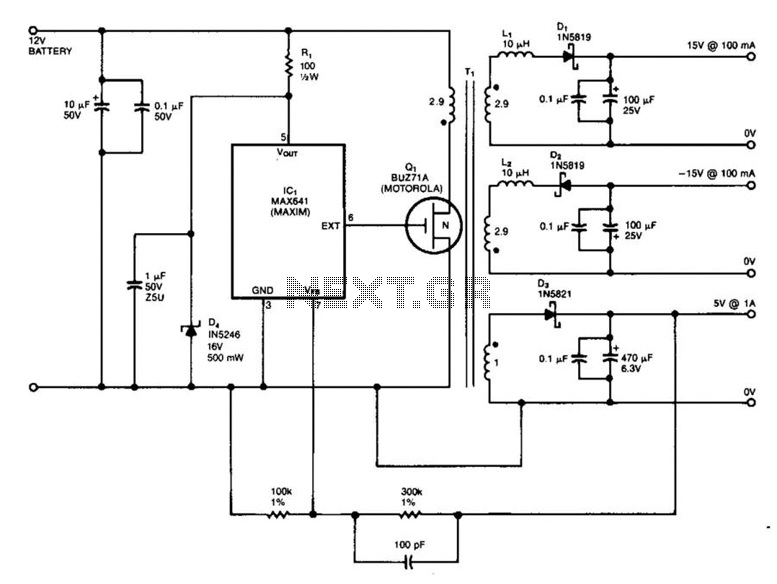
uninterruptible power supply
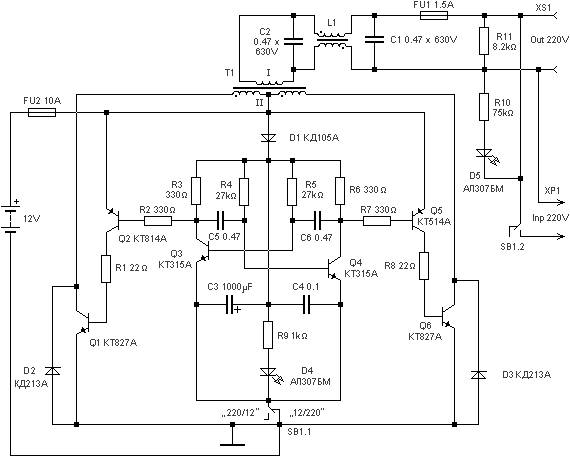
220 watts Uninterruptible Power Supply. Refer to the designated page for an explanation of the related circuit diagram for this power supply.
The 220 watts Uninterruptible Power Supply (UPS) is designed to provide reliable backup power during outages, ensuring that connected devices remain operational. The UPS typically includes a battery, inverter, and various control circuits. The battery stores energy, while the inverter converts the direct current (DC) from the battery into alternating current (AC), which is used by most electronic devices.
The circuit diagram of the UPS includes several key components. The battery management system monitors the state of the battery, ensuring it is charged properly and preventing over-discharge. A charging circuit, often utilizing a transformer and rectifier, converts AC mains power to DC for charging the battery.
The inverter section is critical to the UPS operation. It usually employs a combination of power transistors or MOSFETs configured in a push-pull or half-bridge arrangement to generate the required AC output. The control circuit regulates the output voltage and frequency, ensuring that the output remains stable under varying load conditions.
Additional features may include surge protection, overload protection, and indicators for battery status and load level. These components work together to create a robust power supply solution capable of supporting sensitive electronic equipment during power interruptions.
The overall design prioritizes efficiency and reliability, making it suitable for applications such as home offices, medical equipment, and data centers where continuous power is essential.220 watts Uninterruptible Power Supply power supply. Go to that page to read the explanation about above power supply related circuit diagram. 🔗 External reference
The 220 watts Uninterruptible Power Supply (UPS) is designed to provide reliable backup power during outages, ensuring that connected devices remain operational. The UPS typically includes a battery, inverter, and various control circuits. The battery stores energy, while the inverter converts the direct current (DC) from the battery into alternating current (AC), which is used by most electronic devices.
The circuit diagram of the UPS includes several key components. The battery management system monitors the state of the battery, ensuring it is charged properly and preventing over-discharge. A charging circuit, often utilizing a transformer and rectifier, converts AC mains power to DC for charging the battery.
The inverter section is critical to the UPS operation. It usually employs a combination of power transistors or MOSFETs configured in a push-pull or half-bridge arrangement to generate the required AC output. The control circuit regulates the output voltage and frequency, ensuring that the output remains stable under varying load conditions.
Additional features may include surge protection, overload protection, and indicators for battery status and load level. These components work together to create a robust power supply solution capable of supporting sensitive electronic equipment during power interruptions.
The overall design prioritizes efficiency and reliability, making it suitable for applications such as home offices, medical equipment, and data centers where continuous power is essential.220 watts Uninterruptible Power Supply power supply. Go to that page to read the explanation about above power supply related circuit diagram. 🔗 External reference

